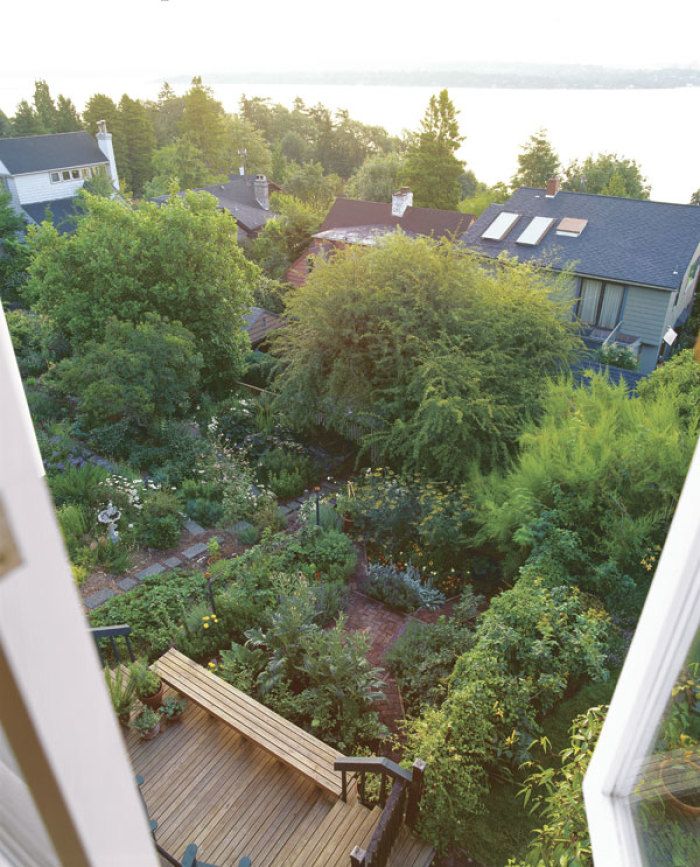
by Mary Maier
August 1996
from issue #4
From our house in Seattle, we have stunning views of Lake Washington, the nearby Cascade Mountains, and glacier-covered Mount Rainier. But when my husband, Harry, and I moved in three years ago, the view down into our own backyard was marred by a drab terrace of woodchips. I’d always had perennial and herb gardens, and now, as a first-time home owner, I was eager to try my hand at food gardening. The empty 16 ft. by 19 ft. terrace seemed like the ideal spot.
The trouble was, my work schedule left me short on time. Being new to the Pacific Northwest, I didn’t know which plants would do well, and I had no background in garden design. Then there was the soil, or lack of it, to contend with.
In February of 1993, pondering how to turn the woodchips into a garden, I attended the Seattle Garden Show. I found myself standing in line for a seminar on drought-tolerant plants. It was a long line, because there had been water rationing the previous summer. I struck up a conversation with the woman next to me, who turned out to be garden designer Sue Moss. She listened to my plans for the terrace and suggested I call her.
I hesitated at first because I had never had help with my gardens. But I did call, and Sue proved to be just what we needed to jump-start the garden. For an hourly fee, she walked the property with us, listened to what we wanted, and agreed to present us with a blueprint. We would take it from there.
A designer helped with the layout
The woodchips sat atop a layer of sand, which in turn sat atop solid concrete—not exactly rich topsoil. Moreover, the terrace received precious little direct sunlight; much of it was shaded by a concrete wall and a fence. And yet by replacing the dull, brown woodchips with a vibrant garden, we could take the least desirable part of our backyard and turn it into an attractive focal point.
To arrive at a suitable design, we climbed up and down the stairs many times, pondering the view from all three floors of the house. Sue suggested dividing the nearly square terrace into quadrants by running paths from corner to corner to form an X. To reach the terrace, you have to climb down stairs that enter at one corner, so an X made sense, but I worried about its neat symmetry. Sue assured me that the plantings would be asymmetrical and that, ultimately, they would tend toward unruliness. The X would provide good structure.
Sue also convinced me that perennial fruits and vegetables could join herbs and ornamentals—even in partial shade—and that there would still be room for annuals: vegetables along with flowers (see plan, previous page). She selected plants for their drought tolerance as well as for their ease of maintenance, because Seattle can be quite dry by late summer.
Available light was also a significant factor. Raspberries would go in the bright bed to the north, which is far enough from the high southern wall to capture direct sunlight. Gooseberries, huckleberries, and alpine strawberries would thrive in the shade beneath the wall.
Sue talked as much about the feel and function of the plants as she did about their looks. Bronze fennel planted in the east bed would feel feathery and light, and yet its height would contain the garden and block the view to the alley below. The silver leaves of artichokes would add drama; lamb’s ears would echo the silver of the artichokes while softening the feel of the garden. The bold texture of rhubarb would counter the fussy herb leaves.
Tomatoes in terra-cotta pots at the east end of the far paths would stop the eye from traveling to our neighbor’s driveway. Asparagus could be over-planted with annuals each summer. Blueberries would fit nicely in the west bed below the deck, herbs could be tucked in here and there. The garden would be productive of food, not just carefree and pretty.
Construction was a family affair
Sue’s blueprint arrived in May. By then Harry and I had managed to give the terrace some tilth. First we ordered a truckload of “Clean Green,” garden waste collected by the city, composted, and then sold back to residents. We rototilled the first wheelbarrow loads of compost to mix them with the woodchips and sand, then added straight compost on top. Much of the work took place in the evening, with neighbors cheering us on and keeping us fed.
Harry, who is a banker, not a bricklayer, took up the challenge of installing the paths. Sue hadn’t specified a path material, so we decided to use old bricks. The earthy, terra-cotta-colored bricks look good set off against green
foliage and they help tie the garden to our brick house.
To select a brick pattern, we studied books and local gardens. I urged Harry to lay down the cedar edging boards as quickly as possible, because I couldn’t wait to transplant the first plants (photo, above). While he cut and fit the boards, I scrambled to plant everything in its appointed place. With me impatiently gardening around him, Harry took just three days to set the bricks on a layer of sand.
Some of the bricks have since settled, but overall the paths have held up. I’m especially pleased with the cedar edging; it adds interest to the paths and echoes the cedar deck. The paths gave the garden its essential character right from the start.
The garden supplies bursts of flavor
In the three short years since we began the garden, a quiet evolution has taken place. Although the brick paths and the form of the beds remain the same, many small details have changed. Consider the raspberry trellis. The second summer, I gathered fallen branches from a birch tree and braided the longest ones around the wire supporting the raspberries. The braided birch whips give the wire some heft and better define the north side of the terrace (photo, above). But the poor raspberries were attacked by cane borers and had to be pulled out. Since then I’ve put in a successful second planting.
The rhubarb in the east bed struggled the first year due to lack of light, and I replaced it with ligularia, a non-edible but equally showy perennial. The blueberries have thrived. This summer, for the first time, they’ll be high enough so that we can pick a few while sitting on the deck.
The artichokes looked so spectacular as they went to seed the first two years, I simply left them there and stood back in awe. This summer, finally, I’m going to pick them for the table. The garden has provided no end of basil, cilantro, parsley, and tarragon, plus flowers for salads and for blending into the scented paper I make. If I have a problem with the herbs, it’s keeping them from taking over.
Along with the edible perennials in the sunniest beds, I’ve been able to grow a handful of pepper and tomato plants, some squash, some eggplant, and some tomatillos. These few plants don’t produce an abundance of fruit, but what they do produce we gratefully bring to the kitchen along with the herbs, perennial vegetables, and berries. Well, to be honest, we consume most of the berries right in the garden.
The point, after all, is to have a garden to be in. Harry and I have a daughter now, so when I go to the garden, I take her with me. The best thing about Sue’s X, it turns out, is that there’s a place at the center where the paths
cross for Sasha to sit and play while I pluck weeds or prune the raspberry canes.

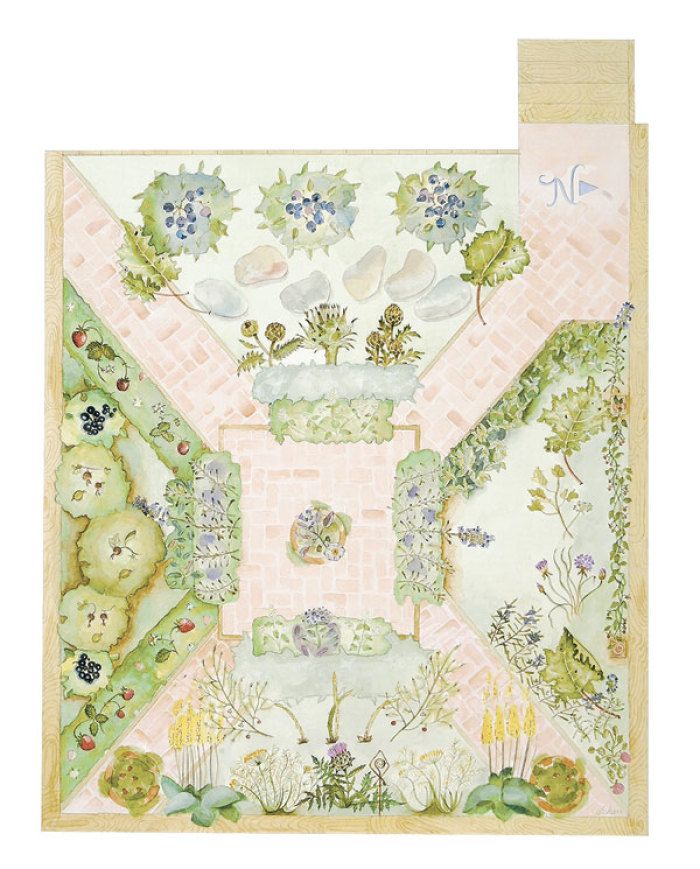
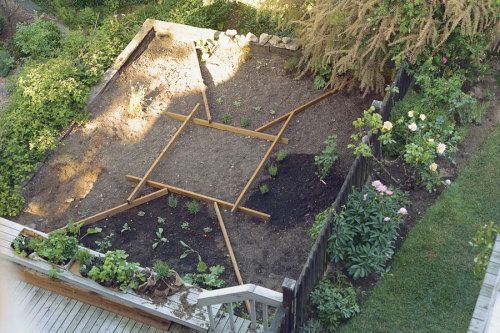
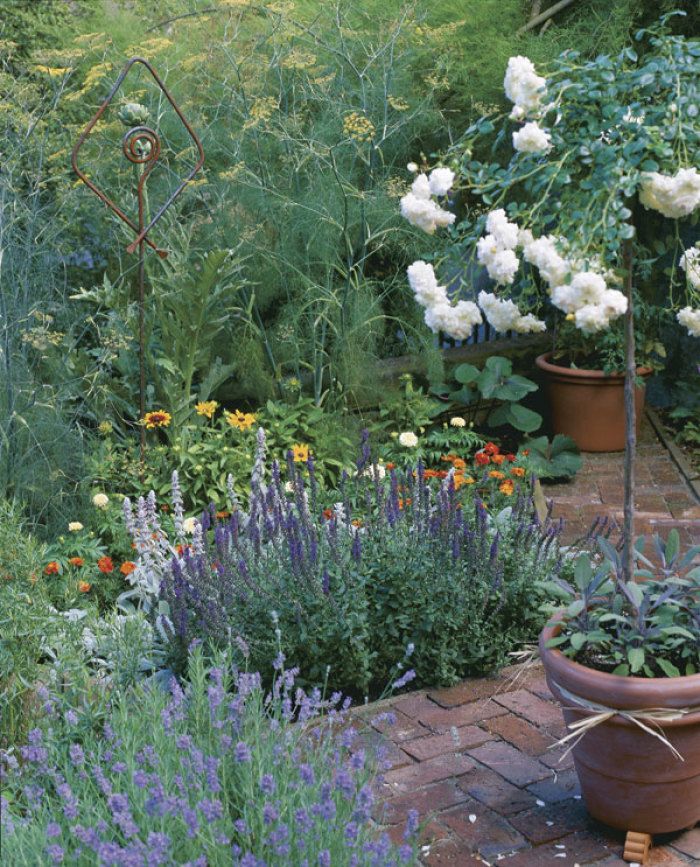
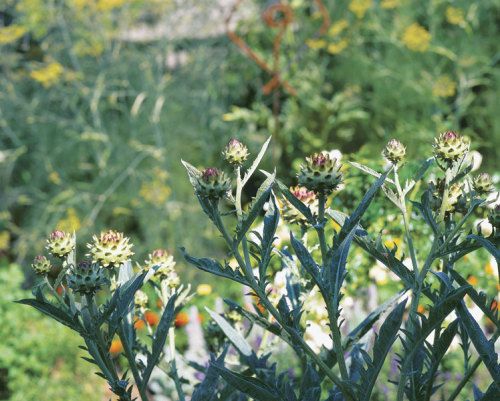
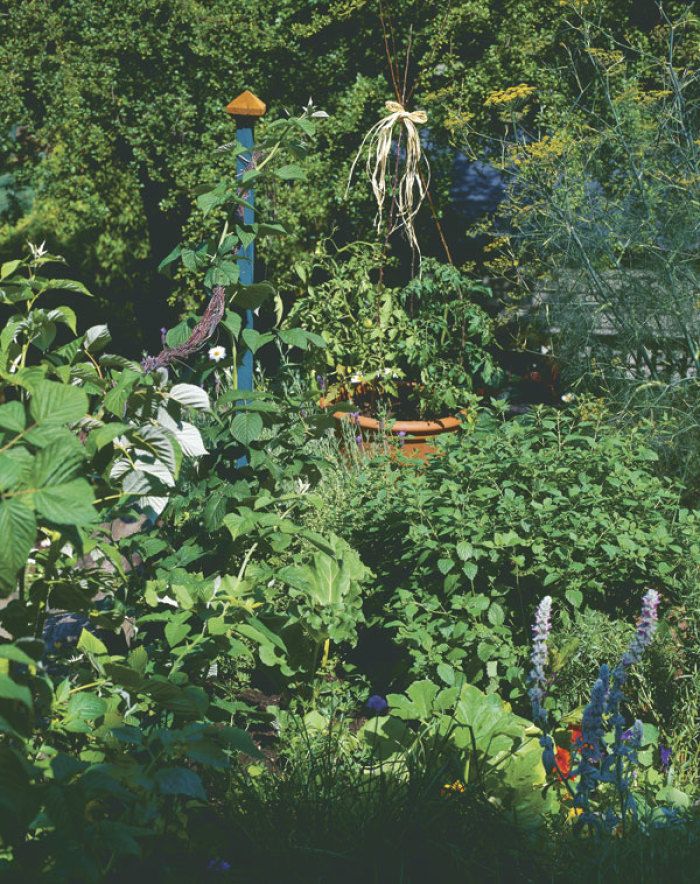
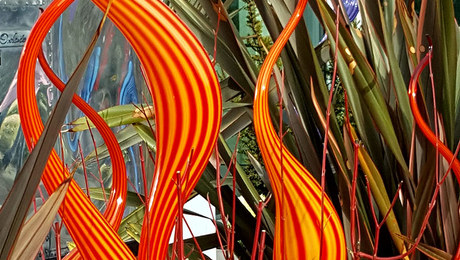
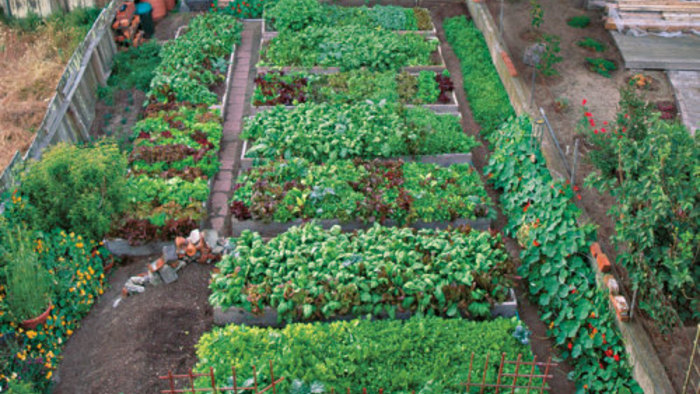














Comments
Log in or create an account to post a comment.
Sign up Log in